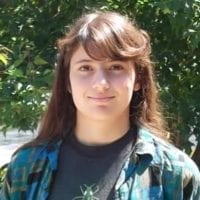
Project Summary
The lab I worked in was interested in iron nutritional quality in corn. I used two nearly identical strains of corn that differed in one major way: the iron in the seeds of one strain is mostly in a form usable by animals while the iron in the seeds of the other is not. We wanted to know what makes these strains different. When I started, it was known that both strains grew well alone in hydroponics, but the low strain showed signs of iron deficiency if grown with the high strain. However, in soil, there weren’t obvious differences between strains. I shed light on this observance by growing high and low strains alone and together in soil of varying iron availability to test if the low strain reacted as it had in hydroponics in response to iron availability. I analyzed differences between plants three ways: with a SPADmeter, which nondestructively quantifies chlorophyll content of a leaf; with a mass spectrometer to see if there were chemical differences between plants; and lastly by harvesting the plants to take fresh weight measurements. We saw significant differences in SPAD values and fresh weights in plants grown with their own strain versus with the opposite strain.
My Experience
I’m very glad I was able to do this internship. Besides the fact that it will look good on college applications, I’ve become familiar with day-to-day work in a lab, gotten to work in the field, and completed a serious experiment. I found it exciting and rewarding to do an experiment to try to answer a truly unanswered question. Finally, I feel I have contributed six weeks’ effort to a worthy cause – the greater understanding of iron nutritional quality in corn, such that more nutritious varieties could soon be available.
